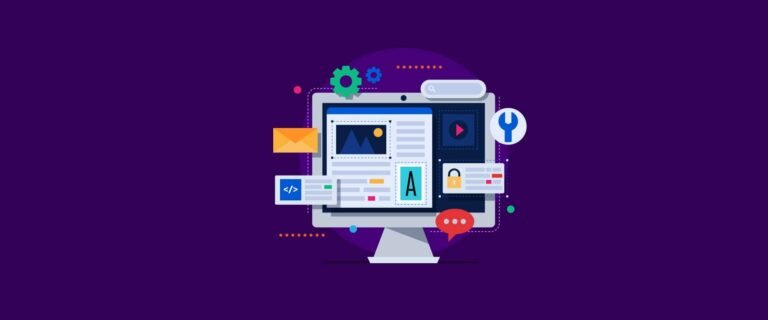Boomers, Millennials, and Gen Z. How to address the learning needs of each generation?
Each generation has different needs and ways of learning. Baby boomers are retiring, millennials are taking over the workforce, and Gen Z is just entering school. It can be daunting for L&D professionals to try to address the learning needs of each generation in their training programs. However, it is important to do so to create an effective learning environment.
Baby boomers grew up in a time when the educational system was based on rote memorization. They learned best by listening to lectures and completing worksheets. As a result, baby boomers often prefer learning in a traditional classroom setting with a teacher-led curriculum.
Millennials are the first generation to be raised in a world where technology is constantly changing. They are used to getting information instantly and prefer to learn through interactive activities such as simulations and games. They also like to have control over their learning and prefer self-paced programs.
Gen Z is the first generation to be born into a world where technology is always-on. They are used to getting information and communicating in real-time. They learn best by doing and prefer hands-on activities. They also like to be engaged in the learning process and prefer social learning environments.
To meet the learning needs of each generation, L&D professionals should create training programs that are:
Traditional for baby boomers: Baby boomers learn best in a traditional classroom setting with a teacher-led curriculum. L&D professionals should create training programs that include lectures, worksheets, and other traditional learning activities.
Interactive for millennials: Millennials learn best through interactive activities such as simulations and games L&D professionals should create training programs that include hands-on activities, online modules, and other interactive learning activities.
Engaging for Gen Z: Real-time communication, doing, and social learning environments are the best ways to engage Gen Z. L&D professionals should create training programs with activities that require teamwork, social learning, videos, and other engaging content.
L&D strategies for Baby Boomers.
The Baby Boomer generation (BBG) is now reaching retirement age, and many are looking for ways to continue learning and developing their skills. Several different strategies can be used to achieve this goal.
Traditional learning methods such as attending classes or reading books are still popular, but online learning has become increasingly popular in recent years. Many BBGers find that online courses offer a variety of flexible learning options and allow them to learn at their own pace.
In addition to formal learning, many BBGers are turning to informal learning methods such as networking with other professionals, seeking out new experiences and keeping up with current trends. These methods can be especially useful for developing new skills or improving existing ones.
Finally, let me remind you that self-study is essential. This might include reading books, articles, and other materials about the subject or practicing new abilities in leisure time. L&D professionals can make self-study an important part of their learning and development programs and offer valuable advice on how to make the most of it.
L&D strategies for millennials.
It is no secret that millennials are unique. They grew up in a different world than any other generation, and they have different expectations and needs. This means that traditional learning and development methods may not be effective for millennials.
Organizations need to develop creative strategies to meet the needs of millennials. One way to do this is by offering training and development opportunities that are flexible and can be accessed online. Millennials also appreciate opportunities to learn from their peers, so offering collaborative learning opportunities is another way to engage this group. Organizations should also make sure that their training and development programs are relevant to millennials’ jobs. Programs that focus on the latest trends and technologies will be more appealing to millennials than those that are outdated.
It is also important to keep in mind that millennials are not a monolithic group. They have different needs and expectations depending on their age, job, and other factors. So it is important to tailor learning and development strategies to meet the specific needs of millennials.
To keep millennials engaged and productive in the workplace, it is important to implement learning and development strategies that cater to their unique needs. Here are a few ideas:
- Offer short, online courses that can be completed within a set time frame.
- Allow millennials to learn from their peers by offering collaborative learning opportunities.
- Encourage millennials to shadow more experienced employees to learn on the job.
- Encourage millennials to take on leadership roles to develop their skills.
- Keep up with the latest trends and technologies so that training and development programs are relevant to millennials’ jobs.
The bottom line is that millennials are a vital part of the workforce, and organizations need to develop strategies to meet their unique needs. By offering flexible, relevant, and collaborative training and development programs, organizations can help millennials reach their full potential.
Also Read: Content Creation for Modern Learning
L&D strategies for Gen Z
Although it’s still early days, the Gen Z cohort is already making its presence felt in the workforce. This generation of digital natives is highly engaged and motivated, but also impatient and demanding. To keep up with Gen Z, employers need to adopt new learning and development strategies that cater to this generation’s unique needs and preferences.
One way to do this is to make use of technology. Gen Z is comfortable with technology and expects to use it in their learning and development programs. This could mean incorporating online modules and microlearning into your training program or using social media platforms to deliver custom e-learning content.
Another key element of successful learning and development strategies for Gen Z is flexibility. Gen Zers are notoriously fickle, and they don’t like to be tied down to one task or activity for too long. They want the freedom to learn in a variety of ways and at their own pace. Employers need to be prepared to offer a range of learning options, including both face-to-face and online training.
Finally, employers should also focus on creating a positive and supportive learning environment. Gen Zers are looking for mentors and role models in the workplace, and they need to feel supported to thrive. Employers can create a positive learning environment by providing feedback, recognition, and opportunities for development.
Wrapping Up.
The learning needs of each generation can vary significantly, so employers need to adopt different strategies to meet the needs of each group. At Learnsure AI, we can create custom e-learning solutions to address the unique needs of your employees, regardless of their generation. Contact us today to learn more.



